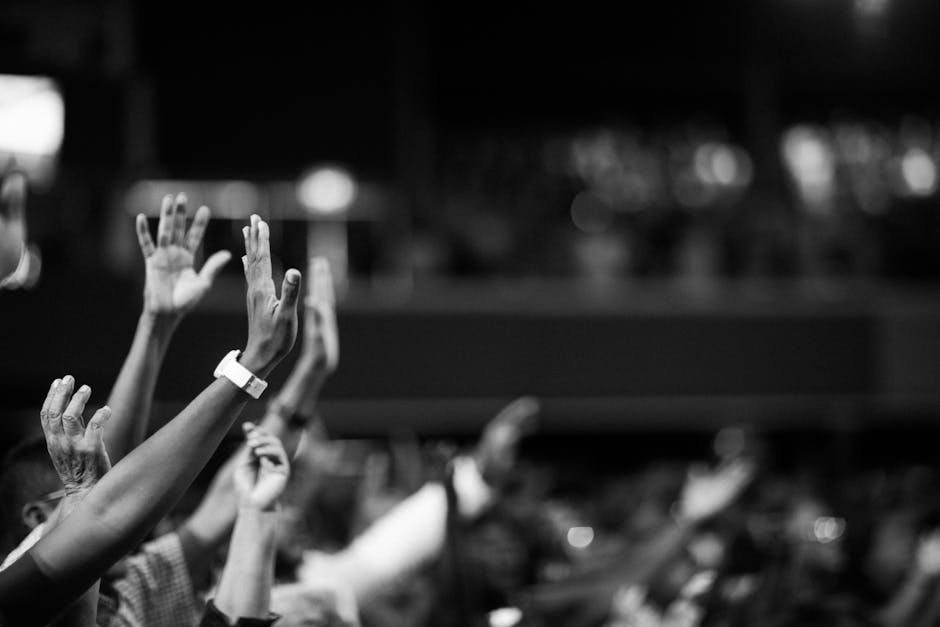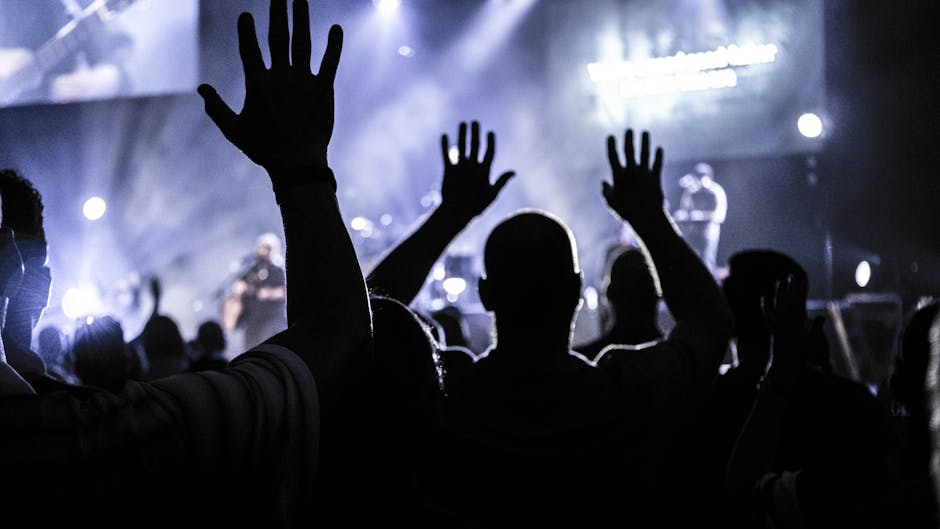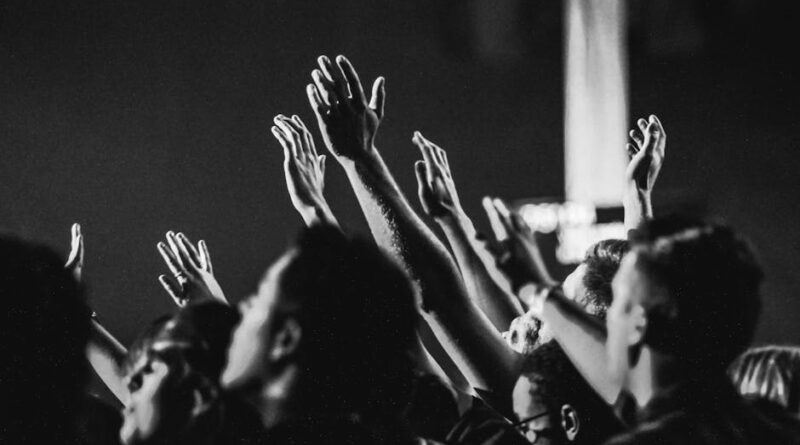The Role of Music in Worship: A Comprehensive Exploration
Music has been an integral part of human culture and society for millennia. Its power to evoke emotions, convey messages, and create a sense of unity is undeniable. When it comes to worship, music takes on a special significance, playing a vital role in religious ceremonies and spiritual practices across different faith traditions. In this article, we will delve deep into the intricate relationship between music and worship, exploring its various dimensions, historical roots, contemporary applications, and the profound impact it has on individuals and communities.
The Historical Significance of Music in Worship

From the chanting of ancient hymns to the elaborate musical compositions of the Renaissance era, music has always been closely intertwined with religious rituals and practices. In many cultures, music has been used as a tool for worship, allowing worshippers to express their devotion, connect with the divine, and experience a sense of transcendence. The use of music in religious ceremonies dates back to prehistoric times, with evidence of musical instruments and vocal performances found in archaeological sites around the world.
One of the earliest forms of musical worship can be traced back to the rituals of the ancient Greeks, who believed that music had the power to communicate with the gods and invoke divine blessings. The use of music in religious ceremonies was also prevalent in ancient Egypt, Mesopotamia, and other civilizations, where priests and musicians played a central role in facilitating spiritual experiences through chants, hymns, and instrumental performances.
During the Middle Ages, the Christian Church played a significant role in the development of musical worship, with Gregorian chant becoming the predominant form of liturgical music. The intricate melodies and harmonies of Gregorian chant were believed to be divinely inspired, creating a sense of awe and reverence among worshippers. Over the centuries, various forms of sacred music evolved, including polyphonic compositions, hymns, and oratorios, each contributing to the rich tapestry of musical worship traditions.
The Transformative Power of Music in Spiritual Practices

Music has the unique ability to transcend language barriers, cultural differences, and individual differences, making it a universal medium for spiritual expression. In the context of worship, music serves as a bridge between the material and the spiritual realms, allowing worshippers to connect with the divine in a profound and meaningful way. Whether through hymns, chants, or instrumental pieces, music has the power to uplift the soul, inspire devotion, and create a sense of unity among believers.
Studies have shown that music can have a profound impact on the brain and body, triggering emotional responses, releasing neurotransmitters like dopamine and oxytocin, and reducing stress levels. In the context of worship, music has been found to enhance spiritual experiences, deepen prayerful contemplation, and foster a sense of community among worshippers. The melodies, harmonies, and rhythms of sacred music can evoke a range of emotions, from joy and gratitude to awe and humility, creating a transformative space for spiritual growth and reflection.
One of the key elements of music in worship is its ability to create a sense of sacred space, transforming ordinary surroundings into a place of reverence and holiness. Whether in a cathedral, mosque, temple, or synagogue, the sounds of music can elevate the worshipper’s consciousness, leading to a deeper connection with the divine. By engaging the senses and creating a multisensory experience, music enhances the overall worship experience, making it more immersive, memorable, and impactful.
The Diversity of Musical Worship Practices

Across different religious traditions, music plays a central role in worship practices, albeit in varying forms and styles. From traditional hymns and chants to contemporary worship songs and gospel music, each tradition has its unique musical expressions that reflect its cultural heritage, theological beliefs, and spiritual values. In Christianity, for example, hymns and choral music are commonly used in traditional liturgical settings, while contemporary Christian music has gained popularity in modern worship services.
In Islam, the recitation of the Quran in melodic tones known as Tajweed is a fundamental aspect of worship, with Quranic reciters revered for their ability to convey the sacred text with beauty and precision. Sufi devotional music, known as Qawwali, is another important form of musical worship in Islam, incorporating poetry, song, and dance to evoke spiritual ecstasy and communion with the divine. In Hinduism, the chanting of mantras, bhajans, and kirtans is a common form of musical worship, with devotees using music to express their love and devotion to the gods.
One of the most vibrant and diverse traditions of musical worship can be found in African American churches, where gospel music has played a central role in the worship experience for generations. Gospel music, with its powerful vocals, soulful melodies, and dynamic rhythms, has the ability to uplift the spirit, inspire faith, and create a sense of joy and celebration among worshippers. Through call and response singing, improvisation, and rhythmic clapping, gospel music creates a participatory and interactive worship experience that engages the whole congregation.
The Role of Music in Contemporary Worship

In today’s digital age, music plays an increasingly important role in contemporary worship practices, with churches, temples, and mosques incorporating a wide range of musical styles and genres to appeal to diverse congregations. Contemporary worship music, with its modern sound, catchy melodies, and relatable lyrics, has become a popular choice for many religious communities seeking to engage younger audiences and create a more inclusive worship environment.
Contemporary Christian worship music, in particular, has seen a surge in popularity in recent decades, with artists like Chris Tomlin, Hillsong United, and Bethel Music gaining international acclaim for their chart-topping albums and worship songs. These artists blend elements of rock, pop, and electronic music with traditional hymns and biblical themes, creating a fresh and dynamic sound that resonates with worshippers of all ages.
Similarly, in the world of Islamic music, artists like Maher Zain, Sami Yusuf, and Dawud Wharnsby have gained a global following for their soul-stirring nasheeds and Islamic songs that promote peace, love, and unity. Through their music, these artists seek to inspire spiritual reflection, foster interfaith dialogue, and promote positive values that transcend cultural and religious boundaries.
While traditional forms of musical worship continue to be cherished and preserved, the integration of contemporary music styles and technologies has brought a new dimension to worship practices, enabling worshippers to express their faith in innovative and creative ways. Whether through live performances, recorded music, or virtual concerts, music has the power to reach people where they are, creating a sense of connection, community, and shared purpose.
The Controversies and Debates Surrounding Musical Worship
Despite its universal appeal and transformative power, music in worship is not without its controversies and debates. Throughout history, there have been disagreements among religious scholars, clergy, and worshippers regarding the appropriate use of music in religious services, the blending of secular and sacred music, and the role of music in shaping theological beliefs and practices.
One of the main points of contention has been the question of musical instruments in worship, with some religious traditions allowing the use of instruments like organs, pianos, and guitars, while others adhere to a cappella singing or vocal music only. The debate over instrumental music in worship dates back to the early church fathers, who argued over whether musical instruments were appropriate for praising God or if they distracted worshippers from the spiritual message.
Another contentious issue is the use of contemporary music styles in worship, with some critics expressing concern that modern worship music may prioritize entertainment over reverence, dilute theological content, or cater to consumeristic trends. Proponents of contemporary worship music, on the other hand, argue that new musical styles and genres can help engage younger generations, foster a sense of relevance and authenticity, and create a welcoming and inclusive worship environment.
Ultimately, the role of music in worship is a complex and nuanced topic that continues to evolve and adapt to changing cultural, social, and technological trends. While some may prefer traditional hymns and classical compositions, others may find solace and inspiration in contemporary worship music that speaks to their lived experiences and spiritual journey. As long as music continues to inspire devotion, deepen faith, and foster unity among believers, its role in worship will remain a vital and cherished tradition.
Common Misconceptions About Music in Worship
One common misconception about music in worship is that it is a mere form of entertainment or decoration, lacking spiritual depth or significance. In reality, music plays a central role in many religious traditions, serving as a powerful tool for expressing devotion, connecting with the divine, and fostering a sense of community among worshippers. Whether through traditional hymns, ancient chants, or contemporary worship songs, music has the ability to evoke emotions, convey messages, and create a sacred space for worship and prayer.
Another misconception is that music in worship is a one-size-fits-all approach, with a limited repertoire of songs and styles that appeal to a narrow range of worshippers. In truth, the diversity of musical worship practices is vast and varied, encompassing a wide range of genres, traditions, and cultural expressions that reflect the rich tapestry of global religious heritage. From classical choral music to gospel, from Sufi devotional songs to Hindu bhajans, there is a wealth of musical traditions that cater to different tastes and preferences, ensuring that worshippers can find music that resonates with their beliefs and experiences.
Conclusion: The Transformative Power of Music in Worship
Music has the remarkable ability to transcend language, culture, and individual differences, creating a sense of unity, harmony, and shared purpose among worshippers. In the context of worship, music serves as a bridge between the material and the spiritual realms, allowing believers to connect with the divine, express their faith, and experience a sense of transcendence. Whether through ancient chants, traditional hymns, or contemporary worship songs, music has the power to uplift the soul, inspire devotion, and create a sacred space for spiritual growth and reflection.
As we have explored in this article, the role of music in worship is multifaceted, complex, and deeply ingrained in human history and culture. From its origins in ancient rituals to its modern-day applications in digital worship services, music continues to shape and enrich the worship experience, offering believers a pathway to the divine and a means of expressing their deepest spiritual truths. Whether through the soothing strains of a flute, the thunderous roar of a choir, or the melodic recitation of a sacred text, music has the power to transform hearts, minds, and souls, creating a sense of awe, wonder, and reverence in the presence of the divine.
As we reflect on the profound impact of music in worship, let us remember the words of the 19th-century composer Robert Schumann: “To send light into the darkness of men’s hearts – such is the duty of the artist and the musician.” May we continue to embrace the transformative power of music in worship, using its beauty and grace to illuminate our path, inspire our souls, and unite us in the eternal dance of faith and devotion.




